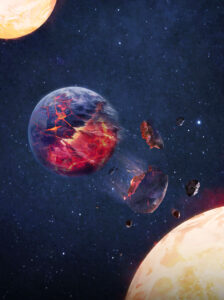
Data, at the end of the day, is our first and last source of understanding. We look, build models to match what we see, predict things we haven’t seen yet, and then ]take more data to confirm those models.
Sometimes, the model is as simple as two stars born out of the same cloud of material should have the same composition.
New data shows us that in 8% of the binary stars in a 91-binary system survey, that isn’t so. In these systems that just have to be different, researchers found that one star looked a bit different in a very specific way: it looked like it had been nibbling planets or planetary disks. This is the first time we’ve seen younger stars with what appears to be a former planet in their atmosphere; this kind of chemical signature had previously only been noted on bloated elder stars that expanded out to eat their planets.
This work is published in Nature with first author Fan Liu. This is your regular reminder: the universe is trying to kill us, and we’re pretty lucky to be on a planet that’s made it this far.
